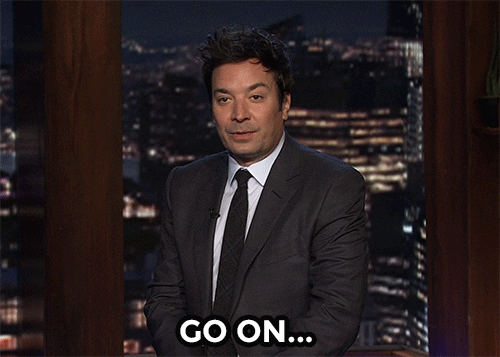Facebook is widely regarded as one of the largest sources of web traffic, boasting 3 billion users and offering excellent targeting options for marketing purposes. Those who have worked in affiliate marketing are well aware of how effective this platform can be for promoting deals and offers. However, marketers face a significant challenge due to Facebook’s strict advertising policies. To generate income, marketers seek techniques that allow them to bypass or deceive Facebook’s limitations. One such technique is known as cloaking.
Overview of Facebook Advertising Cloaking Techniques
In reality, any form of cloaking serves as a method to differentiate between Facebook’s ad review activities and genuine user traffic on websites. Without a doubt, Facebook remains one of the most powerful platforms for advertisers due to its highly effective demographic targeting capabilities. However, the platform’s stringent advertising restrictions result in a lengthy list of prohibited products and services. For instance, you cannot advertise tobacco-related products (including cigarettes), weapons and ammunition, adult products, and content, various dietary supplements, alcohol, gambling, short-term loans, and more.
Consequently, many companies and marketers find themselves unable to tap into the vast user base and efficient targeting options offered by Facebook. Some resourceful individuals have discovered ways to circumvent bans and still reach users on Facebook. Despite Facebook’s rigorous measures, several marketers continue to take calculated risks.
Marketers employ various strategies to discern Facebook’s moderation activity. While Facebook does not publicly disclose a list of IP addresses associated with its moderation system, some information has leaked. When a server receives a request from an IP linked to Facebook, it displays a page containing content aligned with Facebook’s policies and requirements. Conversely, requests from unrelated IPs yield genuine content.
Some people have implemented cloaking techniques across multiple platforms, leaving newcomers curious about this technical approach.

In reality, there are two primary meanings of the “cloaking” technique in affiliate marketing. In both cases, “cloaking” refers to disguising or concealing. The first scenario involves the most common form of cloaking: shortening links. If you’ve been involved in digital marketing, you’re likely familiar with some excessively long and visually unappealing links. To address this, marketers “beautify” these links by making them shorter (or more aesthetically pleasing). When you read articles about cloaking techniques, they often focus on various types of link shortening.
There are several reasons for link shortening:
- Creating More User-Friendly URLs: Shortened URLs are easier to remember, use, and share.
- Protecting Affiliate Commissions: Shortened links conceal your affiliate tracking ID, safeguarding you from commission theft.
For instance, consider the following examples:
- Uncloaked Affiliate Link:
https://shareasale.com/r.cfm?b=14f2ewefw&m=asdawdd3a&urllink=product - Cloaked Affiliate Link:
yourcoffeesite.com/coffee-machine
The cloaked link appears friendlier and more clickable, enhancing user trust. So, while cloaking might sound mysterious, it is a standard practice in the affiliate marketing industry and serves a valuable purpose.
Learn more: https://www.linkedin.com/pulse/cloaking-ads-technique-solution-advertising-products-social-agency-ymj9c/
Type of Facebook Advertising Cloaking Techniques
Due to the reasons mentioned above, cloaking techniques can be categorized into three types based on their purpose and implementation. Let’s explore these:
White Hat Cloaking
- In this method, users are segmented into different groups based on their preferences and geographical locations.
- Search engines employ this technique to redirect users to localized platforms.
- Similarly, many e-commerce platforms tailor their services and products based on users’ search histories.
- Filtering out fraudulent traffic (such as VPN servers, unrelated GEO locations, or bot traffic) while preserving your advertising budget is still considered “white hat.”
- The core principle is that both regular users and verification/approval personnel see the same page with identical content.
Gray Hat Cloaking
This type of cloaking is unrelated to officially prohibited or illegal content but goes against certain individual service policies. Gray hat cloaking is commonly used in SEO. In this method, search engine bots encounter a webpage densely packed with keywords, while regular articles are displayed to users. Technically, this approach is not illegal. However, many search engines consider such pages deceptive and may penalize accounts.
Black Hat Cloaking
You might have guessed it: black hat cloaking techniques involve promoting content or niche markets that are prohibited. Not everything is necessarily an illegal product or service. In most cases, marketers have to deal with industries that can pose some level of risk, such as gambling, betting, cryptocurrencies, adult content, dating, or non-transparent dietary supplements. Black hat cloaking techniques are used to deceive content reviewers/verifiers, users, and affiliate programs (in cases where you hide the source of traffic—some affiliate programs do not accept specific types of traffic, such as adult content).
Experienced marketers often recommend “whitewashing” gray and black hat techniques. Whitewashing involves making black hat advertisements resemble white hat ones. Even if you successfully pass the official review, you may still face penalties if users file complaints.

There’s a well-known secret: Facebook isn’t always friendly toward affiliate marketing ads. Marketers may wake up one morning to find their pages closed or accounts banned. Even raw links aren’t readily accepted.
Affiliate marketers are well aware of lucrative niche markets, especially in gambling, dating, and cryptocurrencies. By advertising enticing offers within these niches, you can achieve high ROI and commissions in a short time. The key is targeted traffic. And with billions of users, Facebook is an ideal traffic source. However, this platform has strict advertising policies, including restrictions on gambling, cryptocurrencies, and dating ads. Of course, you can explore alternative traffic sources or employ black hat techniques to bypass limitations and benefit from Facebook’s traffic.
Why do you use cloaking techniques?
Link cloaking, also known as URL masking, is a practice used primarily to deceive review processes and promote prohibited content. For instance, gambling content is not allowed on Facebook. However, there are millions of potential gamblers among Facebook users. Therefore, marketers deploy cloaking techniques to promote gambling services: content reviewers and verifiers will see a wholesome page adhering to Facebook’s advertising policies, while regular users will see gambling ads.

Cloaking technique helps eliminate unwanted traffic, including users employing VPNs, competitors, or search engine bots. You wouldn’t want to allocate your advertising budget to this type of traffic. Cloaking safeguards your content from theft because users cannot view the source code. Additionally, it shields you from espionage services, as you’ve avoided both search bots and verification bots, along with spy robots (since they only collect counterfeit pages).
Facebook Advertising Cloaking Technique: How It Works
The cloaking technique employs specialized commands executed by the web server. When the server receives a request, it determines whether it comes from a regular user or a verifier (such as an auditor or a bot). If the command identifies a verifier (bot), it displays a “White Page” (which adheres to the platform’s policies) to bypass scrutiny. Regular users are redirected to the actual content page.
There are two primary methods for identifying who clicked on your link:
- IP Address: In this case, the server identifies bots and verifiers based on their IP addresses. There exists a blacklist of IP addresses associated with verifiers or unwanted traffic. If an IP address is on the blacklist, the White Page is displayed; otherwise, the actual content page is shown.
- User-Agent: The server’s command includes a blacklist database. If a user’s name is on the blacklist, the White Page is displayed. All other users see the genuine content page. This method is effective and straightforward to set up.
Unfortunately, bots are constantly changing their names to deceive cloaking techniques. Recently, auditors have even disguised themselves as regular users to detect fraud. IP-based identification is considered more effective because even if bots or auditors change names, the server can still identify them by their IP addresses.
While the concept may seem complex, marketers no longer need to run separate servers, write and configure custom scripts, or manually search for auditor and bot databases. Several specialized services handle all these tasks. Some paid services offer dual identification methods: IP address and User-Agent. These services continuously update their databases to enhance identification accuracy.
Facebook Advertising Cloaking: A Detailed Guide
In general, Facebook cloaking involves three fundamental stages: nurturing, page creation, and launching. The key principle is “Take it slow!” Be prepared to wait until your new page is completed or allocate additional resources to existing accounts. Let’s delve into the detailed process:
Nurturing
You can either create a new Facebook account or purchase/rent an existing one. On average, the success rate is around 60-70%.
You should pay close attention to selecting an appropriate IP solution – it must be a residential IP (do not consider proxy or VPN solutions – they will not be effective); the IP location must match the ZIP code of your credit card. You can rent a Facebook account from a real person – you need a high-quality, long-standing, and complete account; using this method, the success rate can reach 98-100%.
Learn more: https://optimalmarketingagency.net/experience-buying-updated-2024-facebook-ads-accounts/
Create page
Start
First Campaign: Page Likes:
-
- Start by creating a campaign directly from your Facebook Page.
- Concentrate on accumulating likes for your Page.
- You’ll need to input a valid payment method at this stage (remember, manual entry is essential; avoid copy-pasting).
- For existing accounts, refrain from any activity for at least 24 hours.
Business Manager Setup:
-
- Access the Business Manager.
- Add your personal account and include 3-4 additional accounts.
- Why? In case your primary account faces restrictions, having backups ensures continuity.
Second Campaign: Interaction:
-
- Target interaction.
- Aim for a higher quality score, so ensure more interactions on your ad posts.
- Create a desktop-only campaign without any external links in the ad content.
Third Campaign: Click-Through to Website:
-
- Execute this campaign once you’ve spent around $500.
- The URL, text, and visuals should align with your “black hat” campaign.
- Begin with a $30-40 budget for safety.
Patience and Random Budget Allocation:
-
- The startup process may take 4 days to two weeks.
- Avoid haste; set your budget randomly.
Remember, this approach involves strategic steps and persistence. Good luck!
Optimal Agency, a leading company in Facebook advertising rental service, offers a range of services to enhance your marketing efforts. When you choose to rent their advertising accounts, you’ll receive complimentary services for (BH), (GH), and more. Additionally, you can utilize AdsPower and enjoy free VPS access, all while benefiting from round-the-clock support by experienced advertising professionals. Optimal Agency has successfully collaborated with nearly 1000 clients. Contact us today to learn more about their high quality service!
